After celebrating 100 years of the adoption of the armored vehicles in the Land Force and facing the Ukraine War, the Brazilian armored troop faces one of its biggest dilemmas: which direction to take in its restructuring, facing the perspective of a multipolar world?
Gen Bda Ribeiro – Commander of the 6th Armored Infantry Brigade
From the turret of my M113 BR, I followed closely the certification of my Brigade’s Readiness Force at Camp Saicã. A Regimental Task Force composed of three sub-units plus the necessary support to meet a tactical challenge set by my General Staff. To oppose its objective, a Task Force slightly smaller than a subunit, in an approximate ratio of 5 attackers against each defender.
All instrumented, I mean, with laser devices and with observer-controllers capable of estimating and measuring the results of the clashes in real time, both from direct and indirect shots, a capability provided by our Training Center-South (CA-Sul). A unique opportunity provided by our Land Operations Command (COTER) for the Niederauer Brigade to look at itself and reflect on its future. And what did I see?
The trajectory that allowed us to go through these 100 years of the armored troop in Brazil and culminate with this very high level training was full of remarkable achievements and anonymous heroes. After all, it is not easy for a South American country to follow the conflicts that occur in the world and keep up to date in this scenario of using armored vehicles in conventional warfare.

The challenges were immense, especially the logistical ones, going through science and technology, the scarcity of budgetary resources, the difficulties of reconciling the missions of the Force of a country-continent, the training of personnel, and so on. From this secular trajectory, I had the honor of witnessing his last 30 years as an officer, always involved in the subject.
And what I attest, without a shadow of a doubt, is the immense advance we’ve had, at every moment provided by situations that were not always fully understood by our soldiers. The birth of the Brazilian armored troop took place in the context of the 1st World War.
The new capacity was quickly installed in our territory, by leaders such as General Paiva Chaves and Marshall José Pessoa, taking advantage of the surplus created during the War. In the following stage, in the context before and after World War II and the Korean War, we were again flooded by a surplus of armored cars provided by the USA, which we were able to take advantage of and continued until the mid-1970s, when the military agreement with that allied country was denounced.
We went through an interesting phase, in which we were launched into the challenge of creating our own national industry to supply our armored vehicles, in the 70s and 80s, where we modernized our fleet with national companies and even developed our own fleet with the ENGESA company.
After a lost decade in this subject, we were benefited with a new surplus of armored cars, this time coming from the Cold War, the German armored cars. I was a lieutenant in 1996 when I was sent to Belgium to bring back our Leopard armored cars, A1 version. Our purchases of armored vehicles – the Leopards from Germany, in the first decade of this century, took the Army to another level: we improved our logistical infrastructure to be able to absorb the most modern technologies, introduced the use of modern simulators – applied to teaching and training – and also implemented a modern logistical support system through a contracted company, from which we learned many lessons about logistical sustainability of defense materials.

After 10 years, with the material reaching the end of its useful life, the Brazilian armored troop is pursuing the immense challenge of re-equipment. This time, however, the world does not have surplus, since, with the end of the Cold War, our traditional allies reduced their armored forces, only maintaining much less audacious modernization programs.
The Ukraine conflict launched a desperate race of European countries for re-equipment, and Brazil was left behind in a queue of priorities, as arms industries pursue the most lucrative deals, in terms of volume and levels of need, impacting delivery times and the possibility of developing new projects. It hit us at the moment we launched the Armored Forces Strategic Project.
The decision to be made on the path to follow goes far beyond the technical aspects of the material or resources involved. It demands, above all, a careful selection of strategic partners, capable of providing logistical sustainability in the medium and long term, and whose objectives may be aligned with our National Defense Strategy.

In this multipolar scenario, this choice may provoke some kind of reprisal in some other technological initiative or even in the political, economic, or military fields. We have five projects in sight: the modernization of the VBR Cascavel, the modernization of the Leopard Armored Combat Vehicles (VBC), the acquisition or development of the new VBC and the new Armored Infantry Combat Vehicle (VBCI).
Alea jacta est – the die is cast – since the first two projects – the modernization of the Cascavel Armored Reconnaissance Vehicle (VBR) and the acquisition of the 8 x 8 Armored Cavalry Combat Vehicle (VBCCav), are already to be implemented. Certainly our General Staff will look for the best solution to integrate the solutions implemented in the other projects that are to come, due to logistical and interoperability criteria.
Back to my armored turret, the first time I participated in the Operation, called “Fists of Steel,” which is already a tradition in the Niederauer Brigade, I was a major recently discharged from the ECEME. The operation always takes place at the end of the instruction year, on the Saicã field. But this year the operation had a series of special factors that made it the most effective ever carried out by the Brigade.
We had been preparing for it since the end of last year, with Operation Imembuí, an exercise that involved the entire Southern Military Command. We went through the individual training of the cadres. Then we worked within the most elementary fractions, with a lot of virtual simulation at the platoon and subunit levels. Then we moved on to constructive simulation at the unit and brigade levels, to culminate with the said operation, which was supported with live simulation and officer controllers and observers (OCT), conducted with support from COTER through CA-Sul.
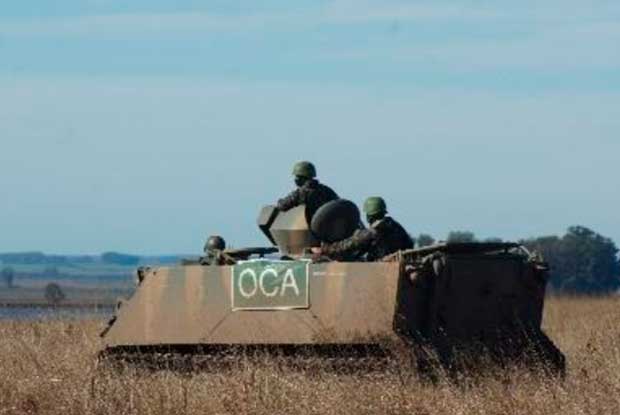
We were also fortunate to have, on the eve of the Operation, a Seminar on the Ukraine Conflict, which took place in Brasilia but which we were able to follow from the field by videoconference, together with the officers and sergeants involved in the training. My Division Commander, Gen Tratz, saw the opportunity to update the troops and provided a transmission point at the Saican field headquarters, which took place on the eve of the operations orders being issued.
Everyone left determined to glean, in the light of what was presented by our C Dout³, the necessary and critical teachings for our improvement as an armored troop. We faced an unforgiving Saicã, in the winter of Rio Grande do Sul, and a very wet soil, which allowed us to test our material to the maximum against an opposing force with material similar to ours.
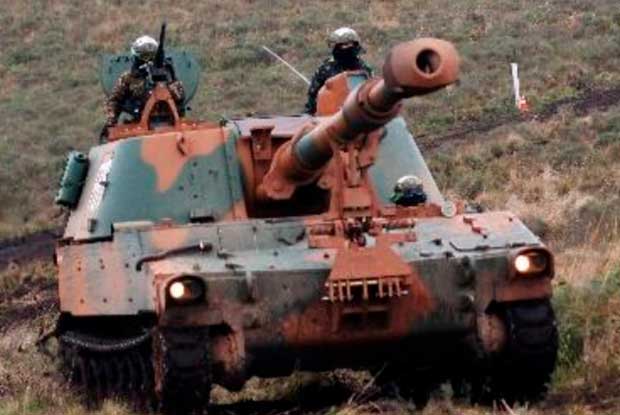
The results were so interesting that they are still being compiled for presentation to the Southern Military Command, in a seminar to take place in October. However, without giving spoilers, here are some of the main needs observed by our soldiers, in general. These are empirical observations, but they are based on the use and handling of our material, on the experience of the cadres, and on the results observed in current conflicts.
The need to improve situational awareness is practically unanimous among the cadres. Situational awareness is situating oneself and the fraction or unit to which one belongs on the battlefield. Knowing where the enemy is in order to put yourself in an advantageous position to defeat him. Situational awareness is something inherent to the art of war, and has always been the reason for victory or defeat in battles.
Since the 20th century, the use of combined arms has greatly increased the need for coordination between the various tasks to be performed: between the maneuver elements, between them and the fire support, engineering and logistics elements.
Knowing one’s position is the most basic need, but others are equally important: exchanging information in real time, sharing the results of reconnaissance, visualizing the surrounding environment, day or night… the sky is the limit in this matter, and the resources involved in obtaining more modern and robust equipment, adequate for combat use, are as great as the demands.
It is necessary to set goals and ambitions, but to definitively break away from the current state of the armored troop to a new level. Initiatives such as the Proteus Project from our Manufacturing Directorate may bring important capabilities, but it is still necessary to carry out more elementary doctrinal experiments in each of the combat subsystems to understand the demand and clearly define goals and objectives.
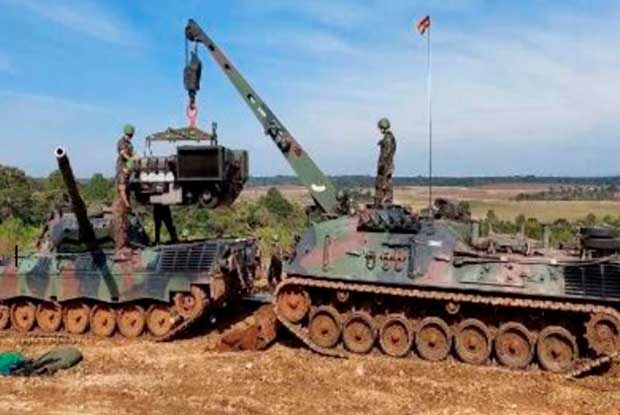
The desire to integrate RPAS into maneuver elements is enormous, and they are already being used in a rudimentary way, with immense benefits for specialized reconnaissance. It would be critical to accelerate this integration process. The training of our fire support elements has been noticeable. In the last few years, with the systematic use of our CA-Sul fire support simulator, our mortar and artillery factions, together with the work of forward observers and the acquisition of new means – particularly the AP M109A5 +BR shells and the heavy mortars manufactured at our War Arsenal in Rio de Janeiro – showed a leap in their performance.
The search, now, is to speed up the order between the Advanced Observers and the parts, preferably by electronic means. The visualized solution could contemplate the use of a specialized vehicle for the observation team, or even the acquisition of portable and automated means for this task. Our IMBEL is working on the improvement of our Genesis System, which should provide good capabilities in this regard. But the subject still needs further refinement and study.
Likewise, without effective engineering the armored troop goes nowhere. We came to this conclusion after carrying out attacks in a waterlogged Saican. In a country of arable land, mobility, counter-mobility and protection needs to be very well worked out, particularly at the most elementary echelons. We feel the need for more means in the sub-unit echelon, which will bring greater capabilities to the combat elements, from special tools to implements to be attached to the armored vehicles.

The demand for engineering work, whether offensive or defensive, exceeds by far the possibilities of our engineering. Even though we have the privilege of having a Battalion Engineer – the other brigades of the Brazilian Army are supported by subunits – we could see this.
The most elementary logistics, to be supported by the 1st echelon of troops, needs means of mobility equal to that of the troops. Supplying water, fuel, ammunition, and providing health and maintenance support to the most advanced elements of a Task Force moving through the field is a huge challenge. Without the proper means to accomplish it, elementary capabilities are quickly lost.
We need to get the means to do it. During the operation, we had an accident with a VBC Leopard. Support was quickly provided by a well-trained APH team on board a VBTP M113 BR, which evacuated the injured to the rear area. Any other type of ambulance would have made evacuation impossible.
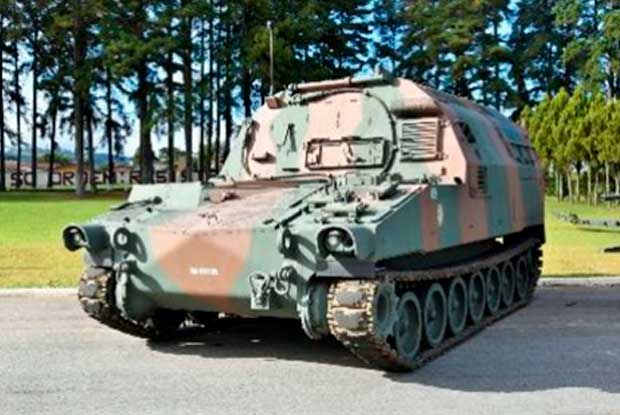
The M992 remunition vehicles used by our GAC were effective in transporting all the ammunition where the demand was felt, which was not the case with our heavy mortars, which had a 5-ton over-the-road vehicle for transporting ammunition.
The role played by our Bergpanzers – armored rescue vehicles – was also felt by all, quickly getting the fractions back on their feet after minor breakdowns. These are examples of success that need to be expanded.
Our Infantry needs more firepower and better quality weapons. As a fraction, the lack of more powerful weaponry makes the Marine platoon an extremely vulnerable fraction to enemy fire. In addition to the firepower of the weapon, currently a .50 machine gun, it would be necessary to equip each of the combat groups with a weapon with a target detection system that prevents the infantryman from entering compartments of the terrain where he could be destroyed.
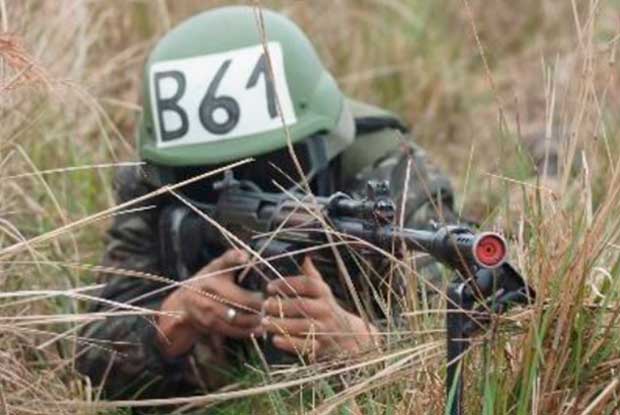

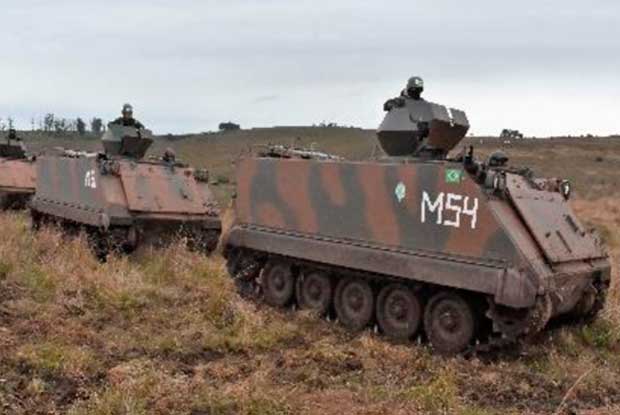
Figure 9 – Armored Infantry in action, on 17 Aug 22. Source: 6th Bda Inf Bld.
Equipping the M113BR VBTP with a weapon capable of doing this is a matter of urgency. The combat vehicle protection function does not only take place when the rifleman are deployed. Providing it with more adequate means of detection and engagement, capable of tracking the cars at night, is an operational deficiency that reduces the capability of our Task Forces.
Additionally, the anti-drone protection function, particularly against RPAS of more elementary levels, could be assigned to this fraction, provided it has adequate means. The solution may lie in a single piece of equipment, a base that allows the detection and engagement of this threat and that also allows the engagement of other types of targets.
The infantry still needs to be better equipped with anti-tank means. Coupling missiles to their platforms or equipping combat groups with portable missiles would be an excellent solution. Furthermore, improving the rifle aiming systems with devices such as holographic sights would greatly increase the effectiveness of rifle fire.
The results obtained in the live simulation left me concerned about their low effectiveness, so much so that we will increase the shooting instructions during the period of readiness. Our Anti-Aircraft Artillery, equipped with our GEPARD 1A2, showed its effectiveness. The GEPARDs are a fantastic weapon, with the same mobility and essential to protect the advance of a Task Force. The Bia AAAe AP² could increase their capabilities by attaching anti-aircraft missiles. Furthermore, improving their radar systems by integrating them with existing search systems would bring even more effective gains.

Concluding our article, the Brazilian armored troop needs to follow its destiny seeking its effectiveness based on its glorious history, rescuing its brilliant past of innovation and ineditism, without losing sight of the fact that we can only be masters of ourselves by means of strategic partnerships that allow its logistical sustainability and technological autonomy.
The quality of the training provided allows us to see our vulnerabilities and the advances that are necessary to achieve effectiveness. Without the engagement of other entities (the so-called “Triple Helix” – academia, industry, and government) in this constant search, we will not be able to continue crossing horizons – as our armored troop song says – in defense of the enormous heritage that was bequeathed to us.
¹RPAS, sigla de Remotely Piloted Aircraft System
²Bateria de Artilharia Antiaérea Autopropulsada – Self-Propelled Artillery Battery
³Centro de Doutrina do Exército (C Dout Ex) – Army Doctrine Center (C Doutrina do Exército)
Imbel – The main products manufactured and sold by IMBEL are rifles, pistols, and carbines; artillery, mortar, and combat vehicle ammunition; gunpowder, explosives, and accessories; communications and electronic equipment; and temporary campaign, humanitarian, and civil defense shelter systems.
VBC – Veículo Blindado de Combate – Armored Fighting Vehicle
COTER – Comando de Operações Terrestres – Land Operations Command
CA – Sul – Centro de Adestramento Sul – South Dressage Center
VBTP – Viatura Blindada de Transporte Pessoal – Armored Personnel Carrier
GAC – Grupo artilharia de Campanha – Campaign Artillery Group
*** Translated by the DEFCOPress FYI Team ***
